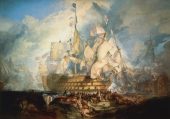
The historic Stone of Scone, also known as the Stone of Destiny, has been transported from its permanent home at Edinburgh Castle in Scotland to London for the
coronation of King Charles III. This is the first time the ancient coronation stone has left Scotland in over 25 years. The Stone of Scone is a significant symbol of Scotland’s monarchy and nationhood, and is believed to have been used in the inauguration of Scottish kings as far back as the early 9th century.
Historic Environment Scotland (HES), which looks after the Stone of Scone, has been working with police and other agencies to ensure that the stone can be transported safely and securely. The stone was removed from the castle on Thursday in a ceremonial procession involving Joseph Morrow, the Lord Lyon King of Arms, and Scotland’s First Minister Humza Yousaf, in his role as the Keeper of the Great Seal of Scotland.
To ensure the stone's safety during transportation, HES has constructed a special carrier mainly from Scottish oak. Kathy Richmond, head of collections at HES, stated that the safe voyage and return of the historic symbol required the care, skill, and expertise of a range of different specialist teams.
The stone's origins are unknown, but it is believed to have been used in the inauguration of Scottish kings for centuries. In 1296, England’s King Edward I seized the stone from the Scots and incorporated it into the Coronation Chair he ordered in 1308 for London’s Westminster Abbey. This chair has been used in the coronation ceremonies of English and British monarchs since Henry IV in 1399.
On Christmas Day in 1950, the Stone of Scone was taken by Scottish nationalists from Westminster but was recovered a few months later, 500 miles (800 km) away, on the high altar of Arbroath Abbey in Scotland. It was officially moved to Scotland on a permanent basis in 1996 and will return there after Charles’ coronation.
The transportation of the Stone of Scone to London has generated a lot of public interest and attention. This historic stone is regarded as a sacred, historic symbol of Scotland’s monarchy and nationhood. Its safe transportation and return will require careful planning and execution, and HES is committed to ensuring that the stone arrives in London and returns to Scotland without any damage or loss. The coronation of King Charles III is expected to be a significant event, and the presence of the Stone of Scone will add to its historical and cultural significance.



































